
views
Gripping the wheels

Place your hands on the hand rims located on the back wheels. If you’re operating your wheelchair by yourself (without a caregiver pushing you), you’ll use the chair’s metal hand rims for movement and steering. Place your left hand on the left rim and your right hand on the right rim. Try to keep a steady grip on the rims—it can take a bit of practice at first but you’ll get the hang of it. Wear fingerless gloves to help prevent blisters, wheel burn, and callouses. Keep your fingernails trimmed short so they're less likely to tear. If you have low grip strength, ask your wheelchair provider about special rims.
Going forward
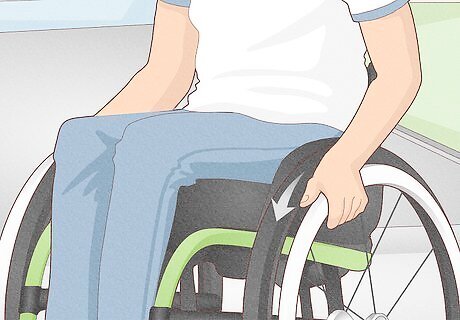
Push forward and down on the hand rims. Reach backwards and grip the wheels as far back as you can. Push the wheels forward by keeping hold of the rims and moving them in a forward direction. Then, let go of the rims. Move your hands back to the starting position and repeat to keep propelling yourself forward.
Turning left and right
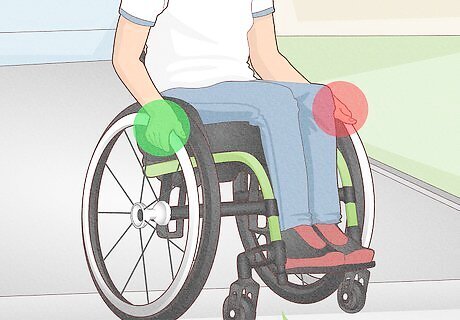
To turn left, old the left wheel still and push the right wheel forward. Get a good grip on the left hand rim. Push the right wheel forward with your right hand to turn left. To turn right, do the opposite: grip the right wheel and hold it still while pushing the left wheel forward.
Going backward
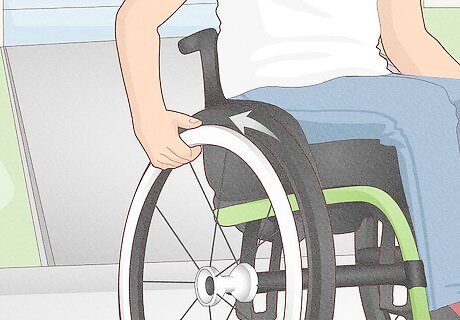
Reach forwards, grip the wheels, and push them backward. Push down slightly on the wheels as you’re pushing backward. Be careful, as the little wheels at the front will need to swivel round. Go slow and don't forget to look behind you.
Stopping a wheelchair
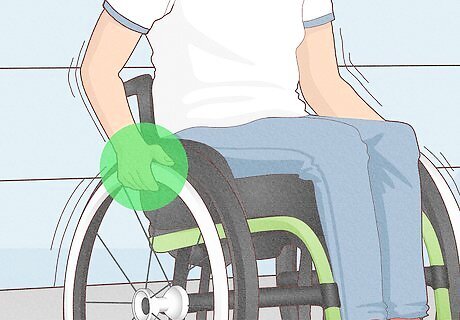
Grip the rims and use friction to slow them down. Pinch the rim between your thumb and the side of the first joint of your index finger. If the rims are wet, pinch the tire instead. You should come to a stop once you apply friction. The friction can hurt your hands if you're on a slope or need to stop suddenly, so be careful.
Going up and down ramps
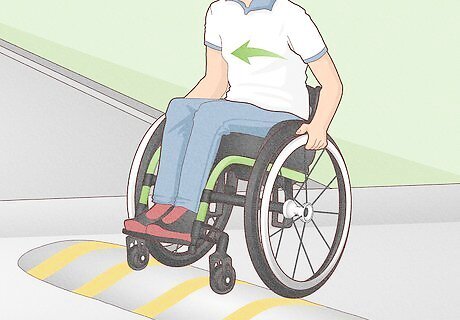
Lean forward slightly and use quick, short pushes. Keep the wheelchair straight when going up or down ramps so you don't tip over. If you're going down a ramp, maintain friction on the hand rims to control your speed. Don't let yourself build up too much speed going downhill or you may not be able to stop. Going up an incline can really give your arms a workout! You may need to get in some practice in order to build up those muscles. Don’t try to go up or down steep slopes yourself. Ask a caregiver to assist you.
Going up a curb or low obstacle

Ask a caregiver for assistance just to be safe. The caregiver should position the chair so it's facing the curb straight on with the front wheels near the edge of the curb. Use the handles to lean the wheelchair backward slightly until the front wheels can clear the curb. Then, slowly push forward as you lift up on the handles to get the rear wheels over the curb. New users really need training and practice under the supervision of a trained healthcare professional before attempting to navigate curbs and obstacles on their own. Even with a caregiver’s assistance, curbs can be tough.
Going down a curb or low obstacle
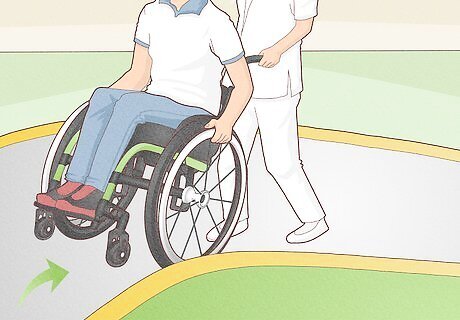
Ask the caregiver to turn the chair backward first. The user should be facing away from the curb for this. Position the wheelchair perpendicular to the curb with the rear wheels up against the curb. Slowly lower the rear wheels down the curb until the front wheels clear the curb. Then, lower the front wheels to the ground. If the wheel chair has anti-tippers installed, be sure to disengage them first.
Locking the wheelchair
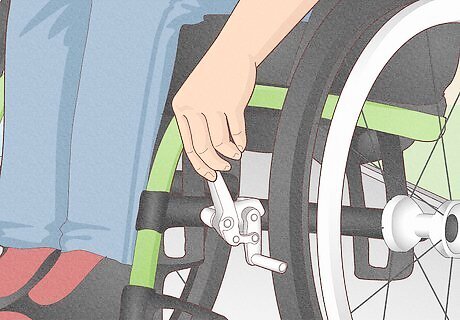
Engage the locks on each rear wheel if you need to stay in one place. All manual wheelchairs have a lock on each rear wheel. Use the locks to avoid rolling when you’re getting in/out of the wheelchair and during transportation. The locks are not meant to be used to slow down the wheelchair, though, so keep that in mind.
Folding and unfolding

To fold the wheelchair up, grip the front and back of the seat and lift up. The wheelchair should easily collapse at this point. To unfold it, tip the wheelchair to the side and push down firmly on the seat rail. It’s usually easier for a caregiver to fold and unfold the chair for you, if possible.
Using public transportation
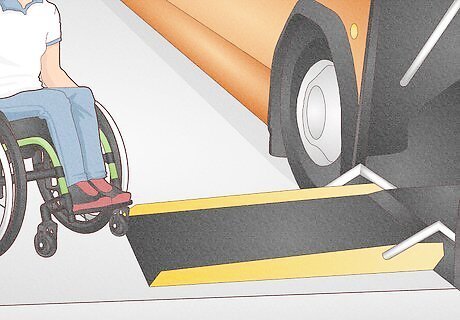
Wait for the bus driver to lower the ramp to the ground for you. Then, propel forward up the ramp like you would any other ramp. After you pay the fare, move to the secure area reserved for riders with wheelchairs (it should be clearly marked). Engage the wheel locks so you don’t roll around during the ride. When you arrive at your destination, disengage the locks and go down the ramp when the driver lowers it to the sidewalk. Talk to your therapist or mobility specialist about anchors and lap belts if you use public transit a lot.




















Comments
0 comment